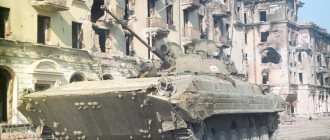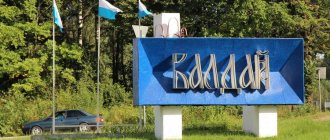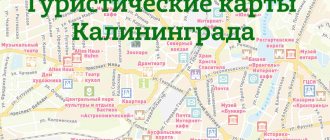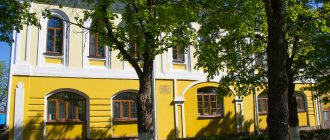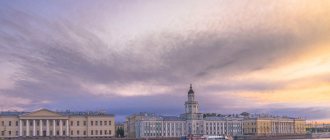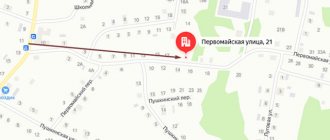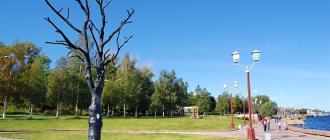| City Novosokolniki Coat of arms |
| A country | Russia, Russia |
| Subject of the federation | Pskov regionPskov region |
| Municipal district | Novosokolnichesky |
| urban settlement | Novosokolniki |
| Coordinates | 56°20′00″ n. w. 30°09′00″ E. d. / 56.33333° n. w. 30.15000° E. d. / 56.33333; 30.15000 (G) [www.openstreetmap.org/?mlat=56.33333&mlon=30.15000&zoom=12 (O)] (Z)Coordinates: 56°20′00″ N. w. 30°09′00″ E. d. / 56.33333° n. w. 30.15000° E. d. / 56.33333; 30.15000 (G) [www.openstreetmap.org/?mlat=56.33333&mlon=30.15000&zoom=12 (O)] (I) |
| Based | 1901 |
| City with | 1925 |
| Center height | 135 |
| Population | ↘7468[1] people (2016) |
| Names of residents | novosokolnichane, novosokolnichanin, novosokolnichanka |
| Timezone | UTC+3 |
| Telephone code | +7 81144 |
| Postcode | 182200 |
| Vehicle code | 60 |
| OKATO code | [classif.spb.ru/classificators/view/okt.php?st=A&kr=1&kod=58226501 58 226 501] |
| : Incorrect or missing image |
Audio, photo and video
on Wikimedia Commons
K: Settlements founded in 1901
Novosokolniki
- a city (since 1925[2]) in Russia, the administrative center of the Novosokolnichesky district of the Pskov region of Russia. It makes up the municipal formation “Novosokolniki” (with the status of “urban settlement” - within the boundaries of the city)[3].
Located in the south of the Bezhanitskaya Upland, on the Maly Udrai River, 287 km southeast of Pskov. The city is home to the Novosokolniki station, a railway junction on the Moscow-Riga and St. Petersburg-Kyiv lines.
Story
The city grew out of a village founded in 1901 at the Novosokolniki station (opened in 1901) in connection with the construction of the Moscow-Vindavo-Rybinsk railway. The name of the village and station was given after the town of Sokolniki
, located 10 km from the present city, on the territory of the Vitebsk province; the station was located on the horse-drawn road from Velikie Luki to Sokolniki.
By decree of the All-Russian Central Executive Committee of June 6, 1925, Novosokolniki received city status[4].
On July 25, 1941, it was occupied by Nazi troops. The city failed to be liberated during the Velikiy Luki offensive operation in November 1942 - January 1943. Liberated on January 29, 1944 by units of the 178th Infantry Kulagin Red Banner Division (commander - Major General A.L. Kronik), which operated as part of the 22nd Army of the 2nd Baltic Front during the Leningrad-Novgorod strategic offensive operation (died in battle about 11 thousand Soviet soldiers). On the same day, by order of the Supreme High Command, gratitude was declared to the troops who participated in the liberation of Novosokolniki, and a salute was given in Moscow with 12 artillery salvoes from 124 guns[5][6][7].
Economics [edit]
Industry[edit]
Textile and food industry enterprises are located in Novosokolniki. [15]
The Novosokolniki guyed television mast, 360 meters (1,180 ft) high, was built in 1995.
Transport[edit]
Railway station in Novosokolniki
Novosokolniki is an important railway junction, located at the intersection of two lines. One railway connects Moscow and Velikie Luki with Riga in an east-west direction. Another railway, running in a north-south direction, connects St. Petersburg and Dno with Nevel and Vitebsk. At Nevel, south of Novosokolniki, it splits into two railway lines, both running south-east into Belarus: one line to Vitebsk and the other to Grodno via Polotsk and Molodechno.
From Novosokolniki it is easy to get to the M9 highway connecting Moscow and Riga. In addition, it is connected by roads with Velikiye Luki and Nevel. There are also local roads.
Attractions
- Monument to Hero of the Soviet Union Aliya Moldagulova (1979, sculptor M. Ainekov[8]). Art monument of local significance[9].
- Monument at the mass grave of railway workers who died during the bombing of the station on the night of August 19-20, 1944[10]
- Memorial: Walk of Fame. Eternal flame. Memorial wall. Belfry. (2005)
- Monument to V.I. Lenin.
- Locomotive-monument -21582.
- Railwaymen's Club named after. Vorovsky (1953).
- Novosokolniki regional museum of local lore.
- Church of St. Nicholas the Wonderworker.
Lost Landmarks
- Wooden railway station building (1901)
- Railway School (1902)
- Church of St. Nicholas for 700 people. (1912; architect Alexandrov).
Neighborhood of Novosokolniki
Near the city, in the village of Novoe, there is a wooden church of the Kiev-Pechersk Mother of God (late 19th century). In the village of Elm there is a settlement and an earthen fortress “Ostriy” (XII-XIII centuries).
Church of St. Nicholas (Pervomaiskaya str. 32-g)
Top
We came to see the Temple in a city that was not too big and were pleasantly surprised.
The first is a large area in front of the temple with good coverage. This already puts us in a good mood. It can be seen that the entire Temple complex is new, in good, well-maintained condition.
A neat white fence, and Christian beliefs written on it in red letters.
Behind the fence is a beautiful new wooden church building. As we learned, this is the first temple in Novosokolniki to be built anew. Its construction began under Metropolitan Vladimir (Kotlyarov) in 1991, the father of the current rector, priest Alexy Ilnitsky. Construction was completed in 1996.
The temple is highly revered by the residents of Novosokolniki.
We come closer to the gate and with pleasure we can admire the picturesque design of the territory. The real “Little Paradise”, they say, is what many people call the local Temple. The area has been landscaped with great love. Beautiful plants, a lot of greenery and flowers.
In summer there is a fountain. Inside the fence is the grave of artillery general Chagin, who headed the commissions for the production of weapons under the tsarist government.As the rector, Archpriest John Ilnitsky, tells us: usually there are 70-80 people standing in the church at the Liturgy. We serve on Saturday, Sunday, holidays, the church is open every day.”
The temple has a beautiful carved icon of St. Nicholas, the temple itself is also made of wood, it was carved by the servant of God Victor, he carved this icon and soon became a priest, serving in the Ascension Cathedral of Great Luke. All the people helped build the temple and decorate it, there were no special donors, but there was a community, people from Nevel, from Velikiye Luki helped, the regional authorities helped a lot. People named Nikolai continue to help the temple. The temple was consecrated by His Eminence the Bishop in 1996 in honor of the Saint, and I believe that Saint Nicholas is the master here. All the icons in the iconostasis are painted, the icon of St. Nicholas was bought from the owners, I dreamed of an icon of the Kazan Mother of God, like in Velikiye Luki, where I was ordained in the Church of the Kazan Mother of God, and they gave it to us, we restored the image, and people receive great help from it - popular rumor conveys this. Seven icons were given to us from the Pskov Museum-Reserve.”
There is a Sunday school in the parish, and in May at the Novosokolnikov secondary school every year a conference is held on the spiritual and moral education of our children, it is held by the rector together with the parishioners, the district education department, and the school.
It’s a pity that we weren’t able to get into the Temple. Therefore, our acquaintance with the Church of St. Nicholas remained only visual. The rest we read on the Internet. And we moved on...
Notes
- www.gks.ru/free_doc/doc_2016/bul_dr/mun_obr2016.rar Population of the Russian Federation by municipalities as of January 1, 2016
- THE USSR. Administrative-territorial division of the union republics on January 1, 1980 / Compiled by V. A. Dudarev, N. A. Evseeva. - M.: Publishing house "Izvestia of the Soviets of People's Deputies of the USSR", 1980. - 702 p. — P. 202.
- [zakon.scli.ru/ru/legal_texts/act_municipal_education/printable.php?d_id4=60761c06-b37c-42b9-be26-3b94ef7ba664&do4=document&id4=112d79f6-ef48-4d3c-a074-fb1a9a6546c9 The law of the Pskov region “On established and borders and status again formed municipalities on the territory of the Pskov region" Amendments dated 06/03/2010 No. 984-OZ].
- Kolomytseva N.V.
[www.derjavapskov.ru/arch/archhhhh/989/ Pskov province is 225 years old] - [gigabaza.ru/doc/76524-pall.html Liberation of cities: A reference book on the liberation of cities during the Great Patriotic War of 1941-1945] / M. L. Dudarenko, Yu. G. Perechnev, V. T. Eliseev and others; Under general ed. S. P. Ivanova. - M.: Voenizdat, 1985. - 598 p. — 50,000 copies.
- [www.soldat.ru/spravka/freedom/1-ssr-4.html Liberation of cities. THE USSR. M—O]
- [sport.pskov.ru/part_war.php?ida=1461 War in the Pskov region. Novosokolniki district]
- [nskslovar.narod.ru/otkrytki/3.htm Monument to Hero of the Soviet Union Aliya Moldagulova on the bank of the Maly Udrai river]
- [www.pravoteka.ru/docs/pskovskaya_oblast/6510-p4.html Appendix No. 4 to the Resolution of the Pskov Regional Assembly of Deputies of January 30, 1998 No. 542. State list of immovable art monuments of local significance]
- [nskslovar.narod.ru/otkrytki/14.htm Monument to railway workers]
The church in the village of Novoe is in the name of the Assumption, and not the icon of the Kiev-Pechersk Mother of God. Icons of the Kiev-Pechersk Mother of God - in the Nastsy churchyard (now the village of Runovo). The Assumption Church is now practically lost, the roof and ceiling have collapsed...
Monument to the railway worker
Top
On May 7, 2015, at the Novosokolniki station of the Oktyabrskaya Mainline, the grand opening of a new monument dedicated to the 70th anniversary of Victory in the Great Patriotic War of 1941-1945 took place. It complemented the memorial composition, which is a place of memory of the railway heroes of the Great Patriotic War.
The architects are Velikiye Luki artists Tatyana and Vladimir Orzhekhovsky. The prototype of the monument is the oldest worker of the track complex - enterprise veteran Alexander Evdokimovich Orlov. The history of the Orlov family dynasty goes back four generations.
The monument represents a symbolic figure of a track worker - a track fitter who walked hundreds of kilometers on sleepers, tightened countless bolts and nuts, and hammered tons of crutches. There is a traffic light next to it, which always lights up green. The main idea of the sculpture is both to increase the status of the working profession, and that the railway functions when movers, drivers, carriage workers and electric mechanics work shoulder to shoulder with the railway workers, thanks to teamwork you can see the results. And the green light speaks that the railway tracks are always open.
The idea of the monument belongs to the head of the Novosokolnicheskaya railway distance, Artur Barievich Bagautdinov; it originated with him when he was working as a railway lineman. Then he promised himself that when he became a boss, he would definitely erect a monument to the railway worker. The dream came true thanks to the leadership of Russian Railways, the administration of the Novosokolnichesky district, and entrepreneurs.
After the opening of the monument, the laying of a capsule for the future generation and the hammering of the “golden” crutch also took place.
An excerpt characterizing Novosokolniki
Sonya jumped out of the carriage and ran to the Countess. The countess, already dressed for the trip, in a shawl and hat, tired, walked around the living room, waiting for her family in order to sit with the doors closed and pray before leaving. Natasha was not in the room. “Maman,” said Sonya, “Prince Andrei is here, wounded, near death.” He's coming with us. The Countess opened her eyes in fear and, grabbing Sonya’s hand, looked around. - Natasha? - she said. For both Sonya and the Countess, this news had only one meaning at first. They knew their Natasha, and the horror of what would happen to her at this news drowned out for them all sympathy for the person they both loved. – Natasha doesn’t know yet; but he’s coming with us,” said Sonya. - Are you talking about death? Sonya nodded her head. The Countess hugged Sonya and began to cry. "God works in mysterious ways!" - she thought, feeling that in everything that was done now, an omnipotent hand, previously hidden from people’s view, began to appear. - Well, mom, everything is ready. What are you talking about?.. – Natasha asked with a lively face, running into the room. “Nothing,” said the Countess. - It's ready, let's go. – And the countess bent down to her reticule to hide her upset face. Sonya hugged Natasha and kissed her. Natasha looked at her questioningly. - What you? What happened? - Nothing... No... - Very bad for me?.. What is it? – asked the sensitive Natasha. Sonya sighed and did not answer. The Count, Petya, m me Schoss, Mavra Kuzminishna, Vasilich entered the living room, and, having closed the doors, they all sat down and sat silently, without looking at each other, for several seconds. The count was the first to stand up and, sighing loudly, began to make the sign of the cross. Everyone did the same. Then the count began to hug Mavra Kuzminishna and Vasilich, who remained in Moscow, and, while they caught his hand and kissed his shoulder, he lightly patted them on the back, saying something vague, affectionately soothing. The Countess went into the imagery, and Sonya found her there on her knees in front of the images that remained scattered along the wall. (The most expensive images, according to family legends, were taken with them.) On the porch and in the courtyard, the departing people with daggers and sabers with which Petya had armed them, with their trousers tucked into their boots and tightly belted with belts and sashes, said goodbye to those who remained. As always during departures, much was forgotten and not properly packed, and for quite a long time two guides stood on both sides of the open door and steps of the carriage, preparing to give the Countess a ride, while girls with pillows, bundles, and carriages were running from home to the carriages. , and the chaise, and back. - Everyone will forget their time! - said the countess. “You know that I can’t sit like that.” - And Dunyasha, gritting her teeth and not answering, with an expression of reproach on her face, rushed into the carriage to redo the seat. - Oh, these people! - said the count, shaking his head. The old coachman Yefim, with whom the countess was the only one who decided to ride, sitting high on his box, did not even look back at what was happening behind him. With thirty years of experience, he knew that it wouldn’t be long before they told him “God bless!” and that when they say, they will stop him two more times and send him for forgotten things, and after that they will stop him again, and the countess herself will lean out of his window and ask him, by Christ God, to drive more carefully on the slopes. He knew this and therefore more patiently than his horses (especially the left red one - Falcon, who kicked and, chewing, fingered the bit) waited for what would happen. Finally everyone sat down; the steps gathered and they threw themselves into the carriage, the door slammed, they sent for the box, the countess leaned out and said what she had to do. Then Yefim slowly took off his hat from his head and began to cross himself. The postilion and all the people did the same. - With God blessing! - said Yefim, putting on his hat. - Pull it out! - The postilion touched. The right drawbar fell into the clamp, the high springs crunched, and the body swayed. The footman jumped onto the box as he walked. The carriage shook as it left the yard onto the shaking pavement, the other carriages also shook, and the train moved up the street. In the carriages, carriages and chaises, everyone was baptized at the church that was opposite. The people remaining in Moscow walked on both sides of the carriages, seeing them off. Natasha had rarely experienced such a joyful feeling as the one she was experiencing now, sitting in the carriage next to the countess and looking at the walls of an abandoned, alarmed Moscow slowly moving past her. She occasionally leaned out of the carriage window and looked back and forth at the long train of wounded preceding them. Almost ahead of everyone, she could see the closed top of Prince Andrei's carriage. She did not know who was in it, and every time, thinking about the area of her convoy, she looked for this carriage with her eyes. She knew she was ahead of everyone. In Kudrin, from Nikitskaya, from Presnya, from Podnovinsky, several trains similar to the Rostov train arrived, and carriages and carts were already traveling in two rows along Sadovaya. While driving around the Sukharev Tower, Natasha, curiously and quickly examining the people riding and walking, suddenly cried out in joy and surprise: “Fathers!” Mom, Sonya, look, it’s him! - Who? Who? - Look, by God, Bezukhov! - Natasha said, leaning out of the carriage window and looking at a tall, fat man in a coachman’s caftan, obviously a dressed-up gentleman by his gait and posture, who, next to a yellow, beardless old man in a frieze overcoat, approached under the arch of the Sukharev Tower. - By God, Bezukhov, in a caftan, with some old boy! By God,” said Natasha, “look, look!” - No, it’s not him. Is it possible, such nonsense? “Mom,” Natasha shouted, “I’ll give you a beating that it’s him!” I assure you. Wait, wait! - she shouted to the coachman; but the coachman could not stop, because more carts and carriages were leaving Meshchanskaya, and they were shouting at the Rostovs to get going and not delay the others. Indeed, although already much further away than before, all the Rostovs saw Pierre or a man unusually similar to Pierre, in a coachman's caftan, walking down the street with a bowed head and a serious face, next to a small beardless old man who looked like a footman. This old man noticed a face sticking out of the carriage at him and, respectfully touching Pierre's elbow, said something to him, pointing to the carriage. For a long time Pierre could not understand what he was saying; so he was apparently immersed in his thoughts. Finally, when he understood it, he looked as directed and, recognizing Natasha, at that very second, surrendering to the first impression, quickly headed towards the carriage. But, having walked ten steps, he, apparently remembering something, stopped. Natasha’s face, sticking out of the carriage, shone with mocking affection.


